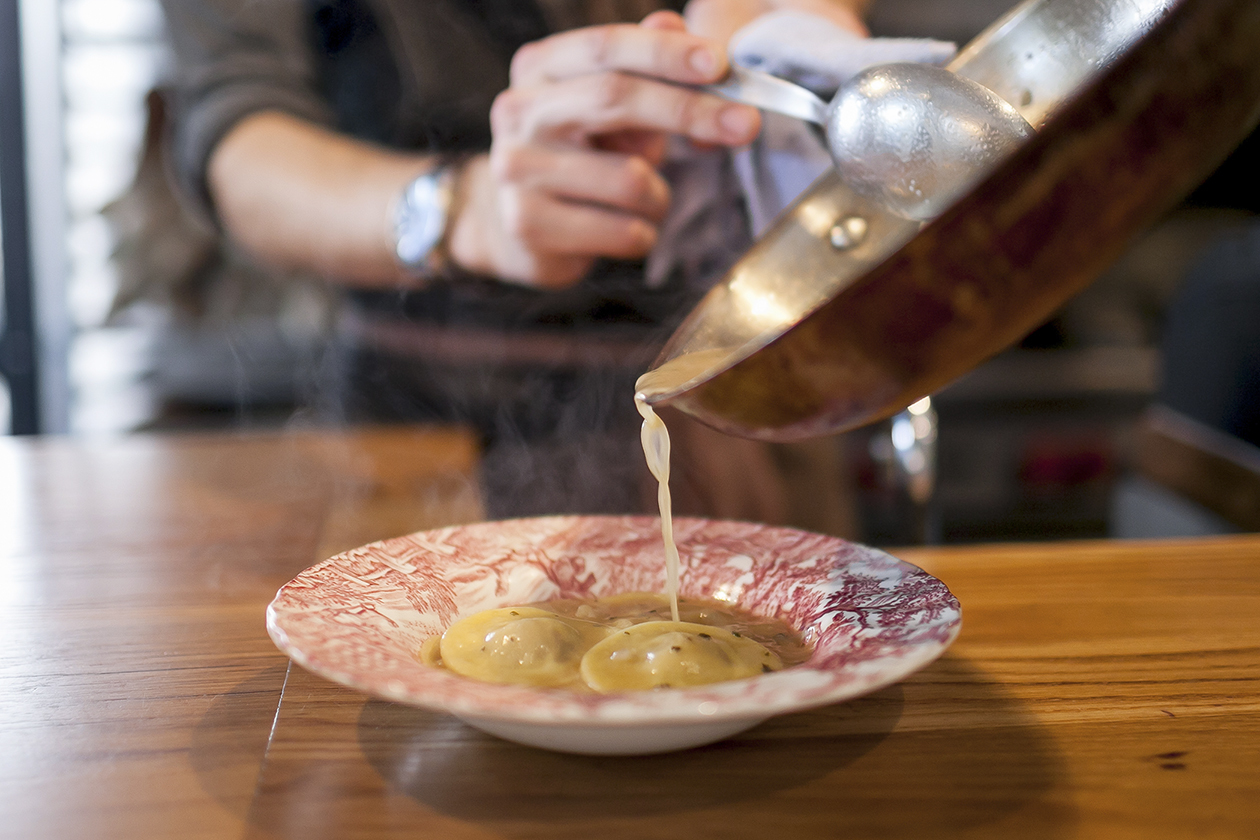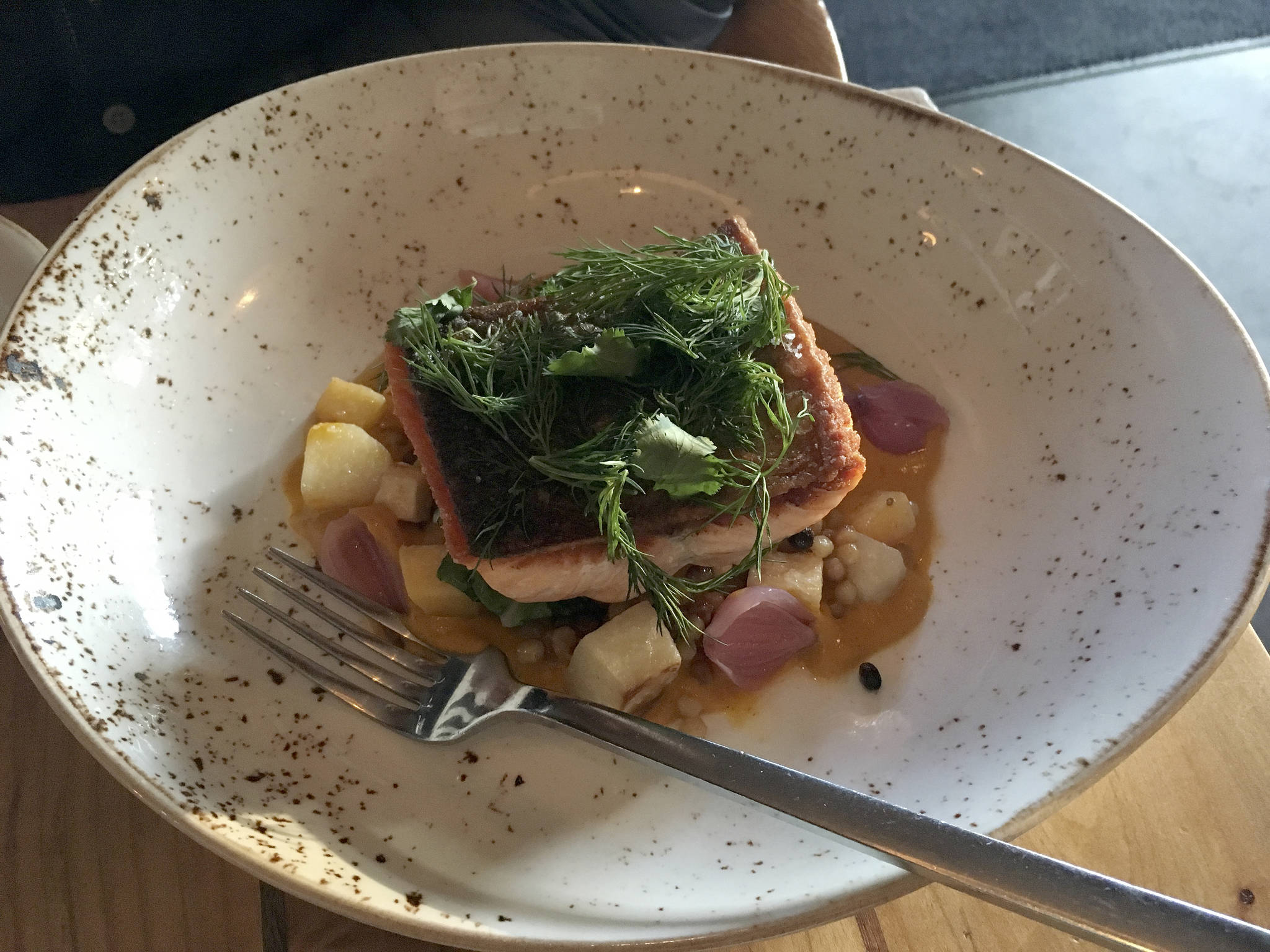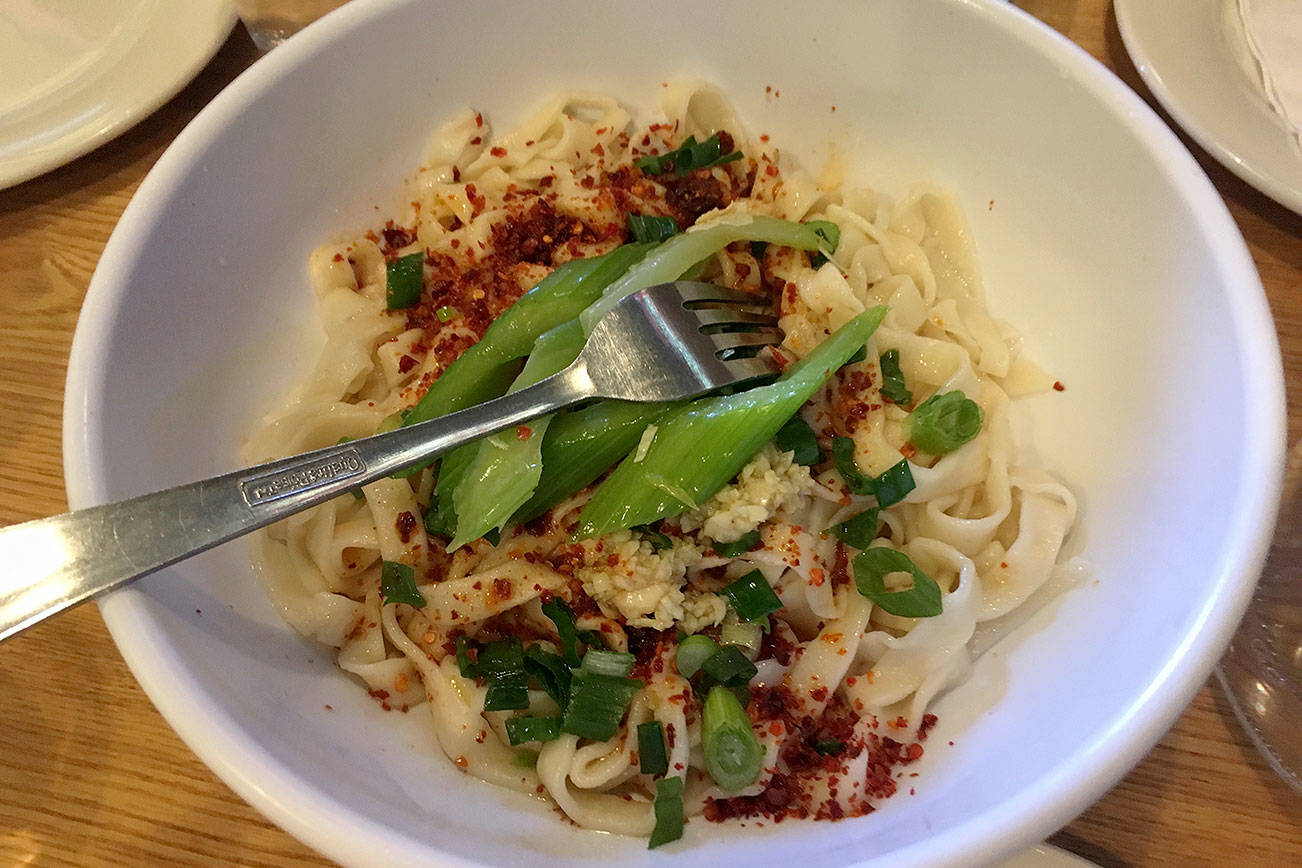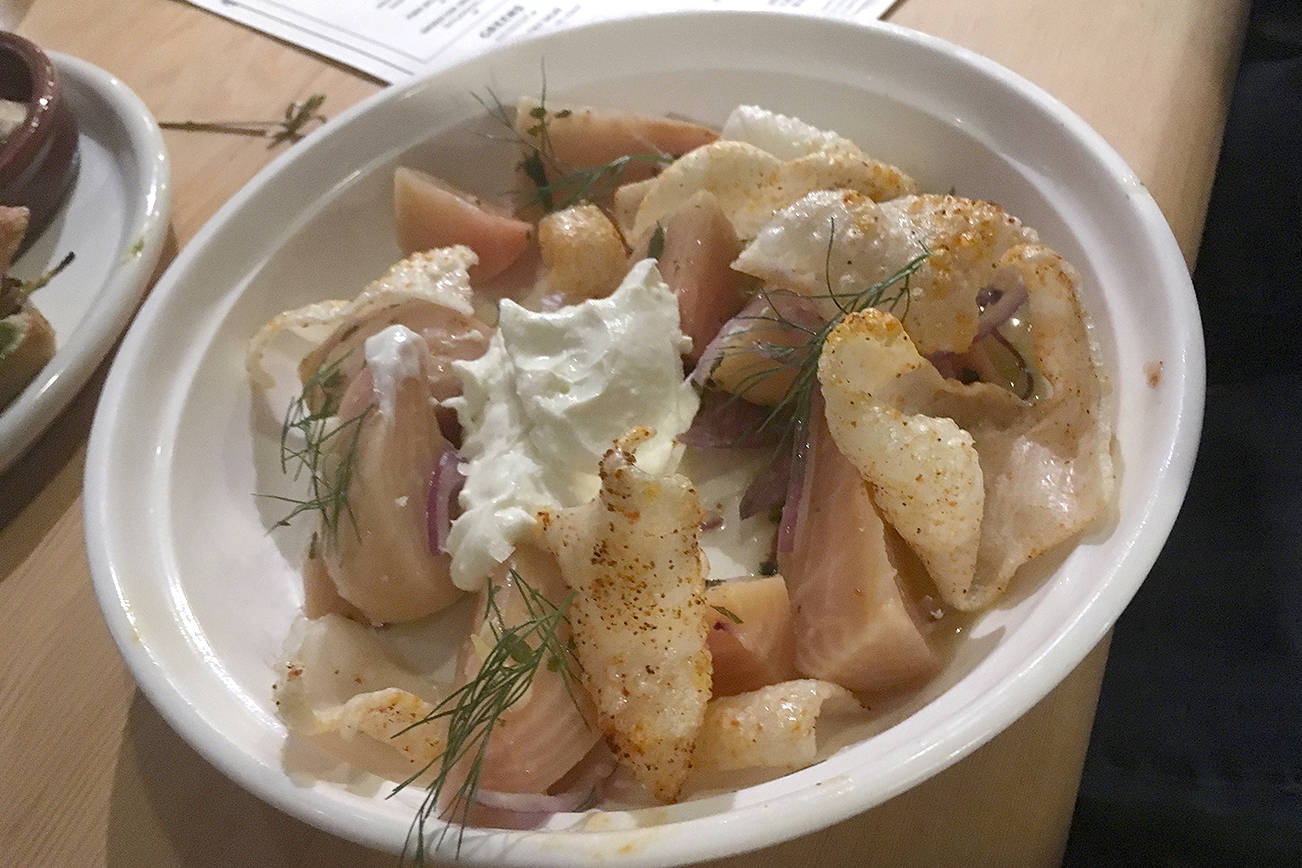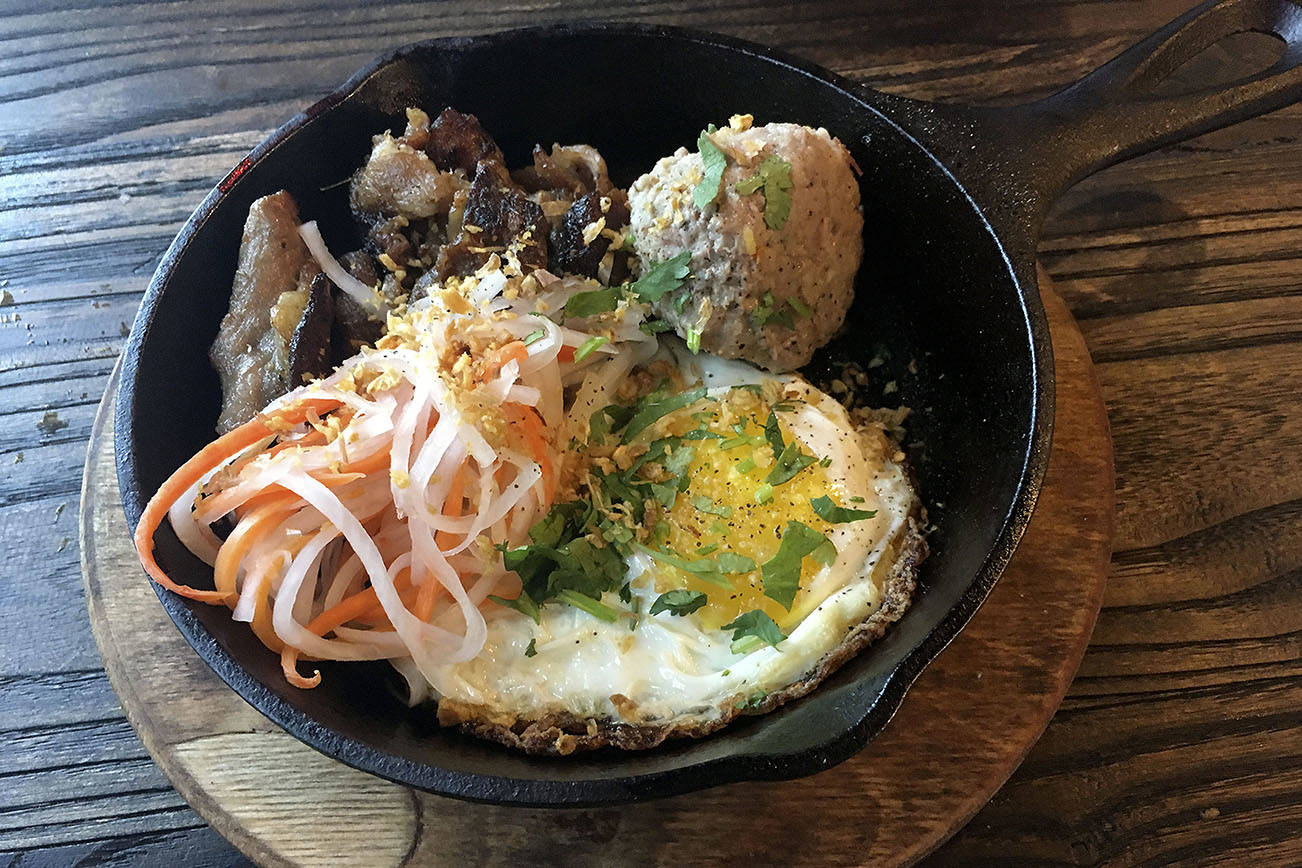If you have walked down Ballard Avenue in the past few months, you’ve probably noticed that the pea-green freestanding house that didn’t really fit in with the slick new restaurants and boutiques has been getting a paint job—among other things. “The Pioneer Houses”—in fact, two houses connected—were brought from the International District years ago and are supposedly the oldest remaining residential structures in Seattle. Now they’ve been painted a cheery white and resemble a quaint seaside cottage, or maybe the guest quarters of a country estate, complete with a front porch from which vines artfully dip. It is also now home to a restaurant—likely the most charming-looking one to hit the scene all year.
There’s an impressive roster of names behind the newly opened San Fermo (5341 Ballard Ave. N.W., 342-1530)—named after an Italian monastery—including folks behind Percy’s (just down the street), Wild Ginger, and Melrose Market: a perfect storm of restaurateurs and real-estate developers who for better or for worse are increasingly dictating our entertainment and dining spaces. In this case they’ve managed to expertly tap into the building’s historic element while adding pitch-perfect doses of modernity. From the plank walls and wooden rafters, all painted white, to the old family portraits on the walls and the lace curtains at the windows, there’s a keen sense of an old, storied home that’s been handed down through generations. But check out the black leather, chaise lounge-like bar seats that tilt back just enough to make you feel like you could tip over (a little scary after a few drinks, perhaps), the retro black swivel chairs, or the copper-topped tables outside, and you get that it’s all been thoughtfully refreshed.
The only problem with all this loveliness is that it sets expectations high—perhaps a wee bit higher than the kitchen can achieve. That said, the owners professed early on that they weren’t trying to reinvent the wheel, but rather serve simple, rustic Italian food. And to a certain degree that’s what they’re doing. Pastas are made in-house and dominate the menu, from classics like spaghetti Bolognese to carbonara mafaldine. I ordered both as a sort of Italian primer litmus test. The Bolognese, made with pork and veal, is solid. It’s a very meaty version, light on the tomato, and with that classic nutmeg flavor coming through. The carbonara, on the other hand, feels more updated, particularly as it’s served over bucatini instead of the more predictable spaghetti. It’s also less saucy and heavier on fresh Parmesan, with the smoky element that typically comes from bacon incorporated into the sauce delivered instead via hunks of salty, cured guanciale. I liked gnawing at them, and it gave the dish more textural surprise. The duck ravioli doesn’t fare as well, though. The ravioli themselves are fine: thin discs that still manage to be hearty. But the duck inside—the same used in the duck salad—is bland and dry. It’s basically just serves as protein, and it gives the whole dish a desultory air. (Even the ricotta is lacking.) That said, the ravioli are served with a vibrant broth that practically thrums with notes of rosemary. I wish there’d been one more ravioli—or some bread—to sop it all up.
Though there will always be standards like the Bolognese or a meat-based entrée like rack of lamb on the menu, there are a lot of rotating specials as well. We tried a couple of them as starters, including a ricotta-stuffed squid in a cioppino-style broth. It sounded like a great idea until we cut into the oval of squid and the ricotta oozed fleetingly into the soup, thwarting us as we tried to hurry and catch it with our forks and shuttle it to our mouths. And though the squid is cooked well, tender and not the least bit rubbery, it lacks salt, as does the broth. The soft-shell crab appetizer, however, is delightful, in part because they’ve managed to get their hands on blue crab—a far better option than, say, Dungeness crab, which is jelly-like in its soft-shell iteration, the reason you never see it on menus. I grew up in Maryland so blue crabs are in my blood, and this version, for $12, would easily cost twice that on a New York City menu. It’s fried expertly, allowing the delicate meat of the newly forming crustacean to emerge in all its iconic sweetness. I usually eat a soft shell between two pieces of white bread with a squirt of mayo and an August-ripe slice of tomato, so I don’t really need it dressed in Calabrian chili and orange, but it doesn’t hurt it—it is, truth be told, a nice addition.
My biggest complaints with San Fermo are its lackluster Italian wine selection (I tried three different glasses from $9 to $12, and none of them excited me), and its uninformed service. Though everyone is pleasant, there’s a noticeable lack of knowledge around everything from the type of crab served (seriously, you don’t know if it’s blue crab or not?) to the seasoning in the octopus dish to the type of tree looming beautifully above us on the side porch, thick with blooming berries of some kind. Make jokes all you like about the Portlandia level of detail diners demand these days, but when it comes to a respectable meal at respectable prices, foodies shouldn’t know vastly more than the people serving them.
At any rate, dessert—an orange olive-oil cake with a blueberry-basil compote and lemon zest, topped with mascarpone, needed no explanation. It is simply summery goodness, and with the 5 p.m. sunlight still warm, but mellow, on the side porch, I couldn’t have asked for more.
food@seattleweekly.com
This story has been modified to indicate that carbonara is usually served with spaghetti, though our critic maintains that it can also be served with fettucine.
